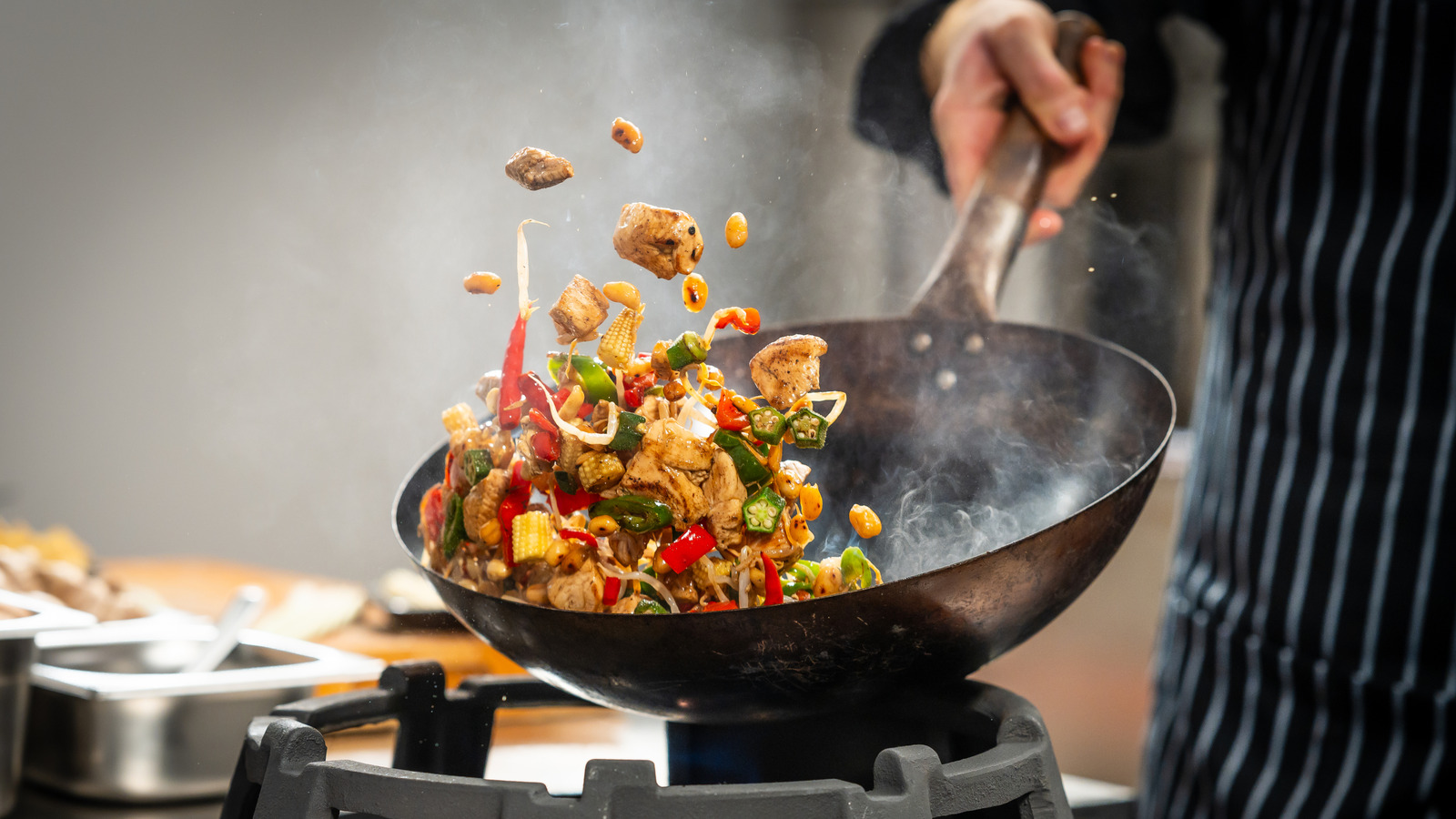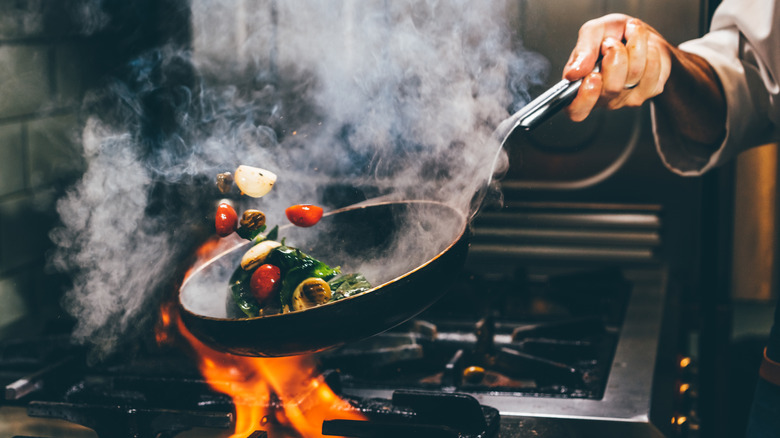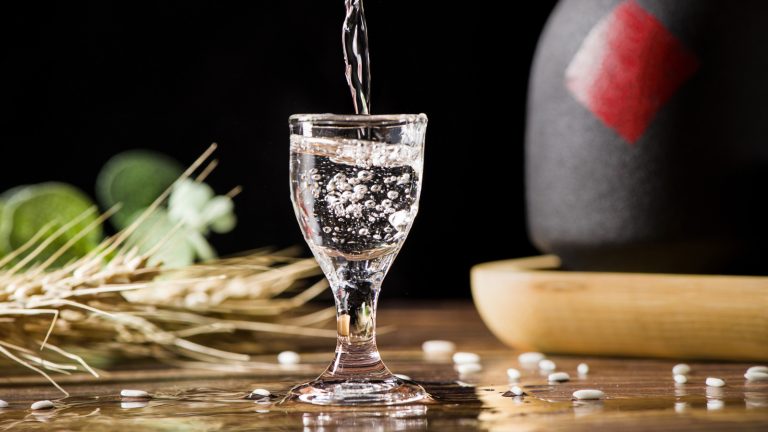There are plenty of handy home cooking tips from seasoned culinary experts like Andrew Zimmern, but there’s just something so thrilling about seeing a chef toss food seemingly effortlessly in a skillet or a wok. And while you don’t have to be a Michelin-starred chef to do it, you can certainly look like one when you do. To find out how, Food Republic spoke to Nicholas Lomba, chef at Bar Lumière, opening in NYC spring 2025. Lomba is very familiar with how Michelin-starred chefs do things — he has worked in several Michelin-starred kitchens, including when those high-end restaurants had their stars reaffirmed.
His biggest piece of advice? Don’t crowd your pan; cook in stages rather than all at once. “Instead of dumping everything in a pan together and overcrowding it, add the foods one at a time and then take it out to make tossing the next ingredients easier,” he explained. Not only does this keep your pan lighter, but you’ll be less likely to lose pieces and make a mess during your toss.
To do this, he prepares his ingredients in advance, much like you would mise en place — which is so important that it’s Ree Drummond’s number one tip for beginning cooks. “I like to put all my prepared ingredients in separate containers to keep things clean and organized. Then[,] I can add food to [the] pan directly from the container,” Lomba said.
Choose the right pan for the job
When it comes to the best pan for the job, look for anything with a curved lip, from your favorite wok to an aluminum skillet. If you opt for a wok, just remember how to season it and keep it that way for the best results. Otherwise, Nicholas Lomba suggested a skillet. “Skillets are extremely useful, and you can cook almost anything in them — so choosing the type of skillet to use is important,” he explained.
For cooking proteins that need a good sear, like a hamburger, Lomba said to choose something with a heavy bottom, like cast iron. However, for delicate foods like fish, the chef suggested nonstick — and nonstick should never be exposed to high heat, as this degrades the coating. If you’re in the market for a new skillet to work on your flipping techniques, the expert recommended, “Look for what kind of material it’s made from and how heavy it is — that helps you know how long it will last.” The heavier the pan, the longer it will last, he explained. Stainless steel and cast iron are quite durable — though using a pan with more weight may make it more difficult to flip your food.






